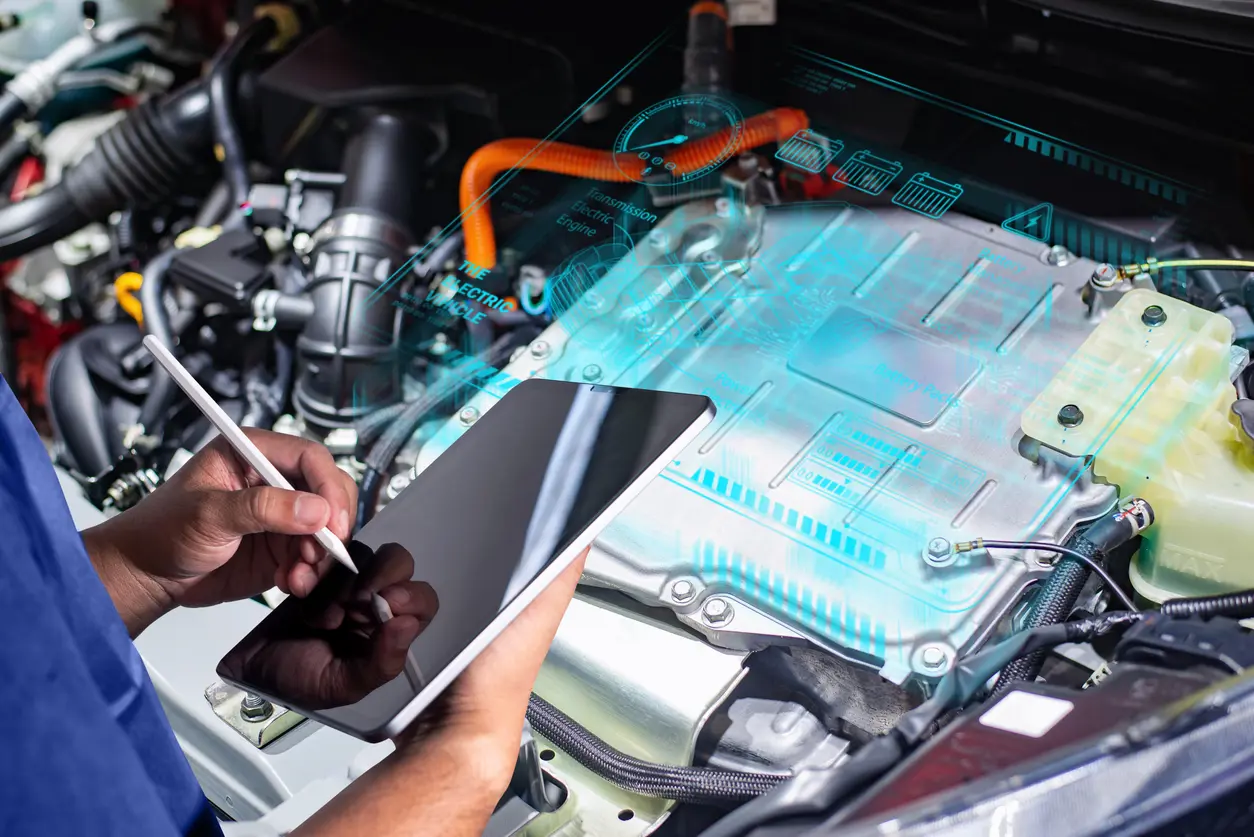What’s too hot for an EV?
During use, heat is automatically generated within a battery’s cells. Combining this with extreme outdoor temperatures can cause permanent damage to the battery and even complete failure.
What is “too hot”? First, a quick primer on battery composition: Almost all EVs today use a lithium-ion battery to get you to your destination. These batteries contain multiple cells (i.e., energy compartments) that include a positive electrode (cathode), a negative electrode (anode), a liquid ion electrolyte, and a separator between the cathode and anode.
EV batteries can generally tolerate temperatures between -20 °C and 60 °C. However, this doesn’t mean that they perform well in this range. Most EV batteries perform their best when the outside temperature is between 15 °C and 25 °C, with the sweet spot being 21.5 °C. Outside of this range, your EV’s performance can dwindle.
Many lithium-ion batteries have a battery management system (BMS) that stops them from working if the operating temperature reaches 60 °C. (Remember that operating temperature does not equal ambient temperature.)
How does heat affect range?
Range is how far your EV can drive on a single charge. When you purchase an EV, it’ll come with an estimated range based on its results from standardized testing. However, the way you drive and the climate you live in can have a great impact on this number.
At high temperatures, chemical reactions in the lithium battery accelerate. This not only ages your battery faster, it also reduces its range. Hot climates can also reduce regenerative braking efficiency and extend charging times.
Despite this impact, cold temperatures often have more adverse effects on EV battery range than hot temperatures. One thing you do need to watch out for in the heat is thermal runaway.
What is thermal runaway?
If it gets too hot for too long, your EV’s battery is susceptible to thermal runaway. High temperatures can cause the electrolyte to evaporate and trigger a chemical cascade that produces even more heat. When one battery cell is damaged, it can spread to affect the other cells, causing a chain reaction known as thermal runaway.
Aside from excessive heat, thermal runaway can also be caused by a serious impact, overcharging, defective manufacturing, or improper installation. It can cause chemical reactions in the battery that generate more heat and flammable gas, putting the battery at risk of igniting or exploding. Once thermal runaway starts, it can be very hard to stop.
The good news is that EV battery combustion is extremely rare. But we still strongly recommend taking any EV battery problems to an auto technician who’s been trained in EV technology.
If you’re ever concerned about the condition of your EV battery, have it assessed by a professional at a NexDrive service centre.
Extending your range and avoiding thermal runaway
-
Park in the shade.
-
Avoid fast charging.
-
Combine quick trips into one journey.
-
Take breaks to let the battery cool down during long trips (i.e., road trips).
For any questions about managing your EV in the heat, visit a NexDrive service centre to speak with an expert.
Other Resources

Why do electric car tires wear out so fast?
EV tires experience increased tread wear because of instant torque and unsprung weight. Learn why electric vehicles lead to worn-out tires and how to extend the lifespan of EV tires with proper maintenance.

Why regenerative braking is bad for your brake pads
Regenerative braking improves energy efficiency, but can cause brake pad issues because of reduced mechanical brake use. Learn how to maintain your brake system and prevent costly repairs in this article.

Does an EV need regular general maintenance?
Although EVs require less maintenance than gas-powered vehicles, they still need regular care. Learn about battery health, brake maintenance, and more here.
